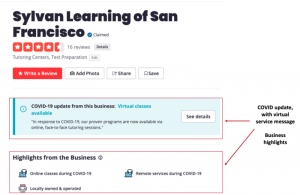
geralt / Pixabay
Finding time to market oneself as a freelancer can be difficult at the best of times, although few would argue that it’s an essential part of the job.
Unlike those working in-house, freelancers have to do it all themselves?—?all of the time. There’s no marketing team to call on for help?—?much like there isn’t a sales team or an accounting person (mostly).
If you want leads to start coming to you, then you need to put down the digital breadcrumbs that are going to make that happen (inbound marketing). Alternatively you need to take initiative yourself and go out and contact prospective clients yourself (outbound marketing). You can also do both?—?which I think is ideal.
Whatever go to market (GTM) strategy you choose, some of the best advice I ever received about freelancing ?is to market most actively when you’re at your busiest. This, I believe, is the key to avoiding the all-too-common feast or famine cycle of freelancing — in a nutshell.
Isn’t it difficult to carve out time for marketing when you’re swamped with work? Unbelievably so.
Doesn’t that lead to burnout? Sometimes, yes.
But I think that it’s essential for success. Here are a few reasons why.
Most Leads Don’t Come Through
To anybody with a background in sales, the fact that most leads don’t make it through the pipeline to conversion is like telling most non-salespeople that the sky is blue.
It’s obvious.
Nevertheless, it takes a little bit of time working for yourself to truly appreciate how much top of funnel leads you need to bring into your pipeline in order to get enough business.
Whether you’re talking about sales qualified leads (SQLs) or marketing qualified leads (MQLs), your lead conversion rate is going to be a percentage rather than ‘1’. If your lead conversion rate (LCR) is 20%, then you’re going to need to bring in five leads to get just one new customer.
With this in mind, anybody that has been doing this for a while has probably come to the conclusion (correct, in my opinion) that marketing and sales is basically a numbers game?—?particularly during these straitened times.
The reasons that leads drop out of pipelines are many and varied. People window-shop (you’re supposed to exclude these through lead qualification). Maybe there’s something about you that has turned your prospect off. Or maybe they’ve decided to take a project in-house rather than farm it off to a freelancer.
While the reasons are often unknowable, there’s a very good chance that your LCR will be hovering somewhere between 10 and 25%. That means that if you want to scale and bring in new customers, you’re going to need to be continuously developing top of funnel activity. And that requires marketing work.
When I started freelancing, I would get excited about every potential lead that dropped into my inbox, mentally penciling them into next month’s schedule. Doing this for a while has inured me to such bursts of excitement. A lead is only a lead; and a first contact marks the beginning of the discovery and qualification process rather than the end of it. Sales and marketing is one area where keeping a somewhat jaundiced eye pays dividends. A client isn’t a client until a contract has been signed. Until then, keep marketing and developing leads.

In freelancing, a rainy day can be closer around the corner than you might think. Joshua_seajw92 / Pixabay
In Freelancing, Nothing Is Certain
Why might you want to be continuously developing sales pipeline in the first place, you might ask?
There are two reasons?—?and I’m sure more.
Firstly, you might be trying to grow your business. Perhaps you’re making $ 50,000 this year and need to be earning $ 70,000 in order to meet your financial objectives and save money towards that car / holiday / house.
The second reason is that your existing clients mightn’t be sticking around as long as you might want and need them to.
In the gritty world of freelancing, volatility is the norm. Clients start and close down projects as their manpower needs evolve; they move on to other freelancers; they go out of business; points of contact move companies.
Just as the reasons why companies drop out of your sales pipeline can not typically be fully ascertained, it’s also not always possible to understand why, exactly, your current clients leave?—?although of course it’s best practice to make every effort to find out.
For freelancers, constantly working on building pipeline through marketing activities is therefore as much a sensible risk-mitigation strategy as it is a means towards achieving business growth.
I like to think of freelancers who are too busy to market themselves as like the Titanic headed for the iceberg. And believe me?—?it’s territory which I have covered.
One day, you’re so inundated with work that you barely have time to eat lunch. You think that things are going swimmingly and forget entirely about the ‘m’ work (marketing). The next, business is nowhere to be seen. Why you ran aground? You forget to market when things got busy.
Like the Titanic, marketing amnesia has scuppered many a freelancer’s journey. Keep selling and marketing yourself. Especially when you’re busy.
But What Happens If I Have Too Many Leads?
Finally, there’s a common concern among freelancers who understand why staying on top of marketing is particularly important when things are busy. That’s that, as one gets better at marketing, this strategy might work a little too well with the result that one has more work and leads than they can manage.
It can happen. While it’s difficult, it’s also automatically preferable (in my view) to not having enough work. To twist a common refrain, it’s better to be looking at too much work than to be looking for it.
Thankfully, there are a couple of ways that this conundrum can be handled.
Firstly, it’s important to be transparent with prospects about your bandwidth from the very start. If things get really busy and you’ve reached the end of your capacity to take on more work, then you can explain to your prospect that you don’t currently have time for more projects.
This has ancillary advantages. It’s been my experience that the best clients are well-organized and aren’t typically in a rush to kick things off immediately. A frantic rush to get going tomorrow is often a red flag for internal disorganization (although there are benign explanations too). You can use the buffer time to fit these projects into next month’s workflow.
Secondly, you can outsource the freelancing. This isn’t something I have experience with at he time of writing. But if growth is your top priority and your bandwidth has been stretched past breaking point, then it might be the most sensible option.
Finally you can outsource the sales and admin side of things. Hiring a virtual assistant (VA) is often the preferred method for achieving this. Just make sure that whoever is working with you is crystal clear on your lead qualification criteria, your current and projected bandwidth, and what a good fit customer looks like for you.
Market Today To Keep Busy Tomorrow
For freelancers, marketing is an essential activity that needs to be ongoing in order to achieve optimal business stability.
Unless you’re confident that you will have enough work to last into the medium term, or that your referral pipeline will keep cropping up new opportunities as soon as you need them, going out and marketing yourself is a prudent course of action. Especially — not also — when you’re at your busiest.
The cold, hard reality is that most leads won’t make it to customers and existing customers can drop off at the most inopportune times. But by expecting the unexpected you can mitigate these risks.
Next time you’re overwhelmed with work, take a moment to make sure that your marketing machine is still ticking over. Consider automation to lessen the burden. The result should be improved business stability and possibly even growth.
Business & Finance Articles on Business 2 Community
(28)




